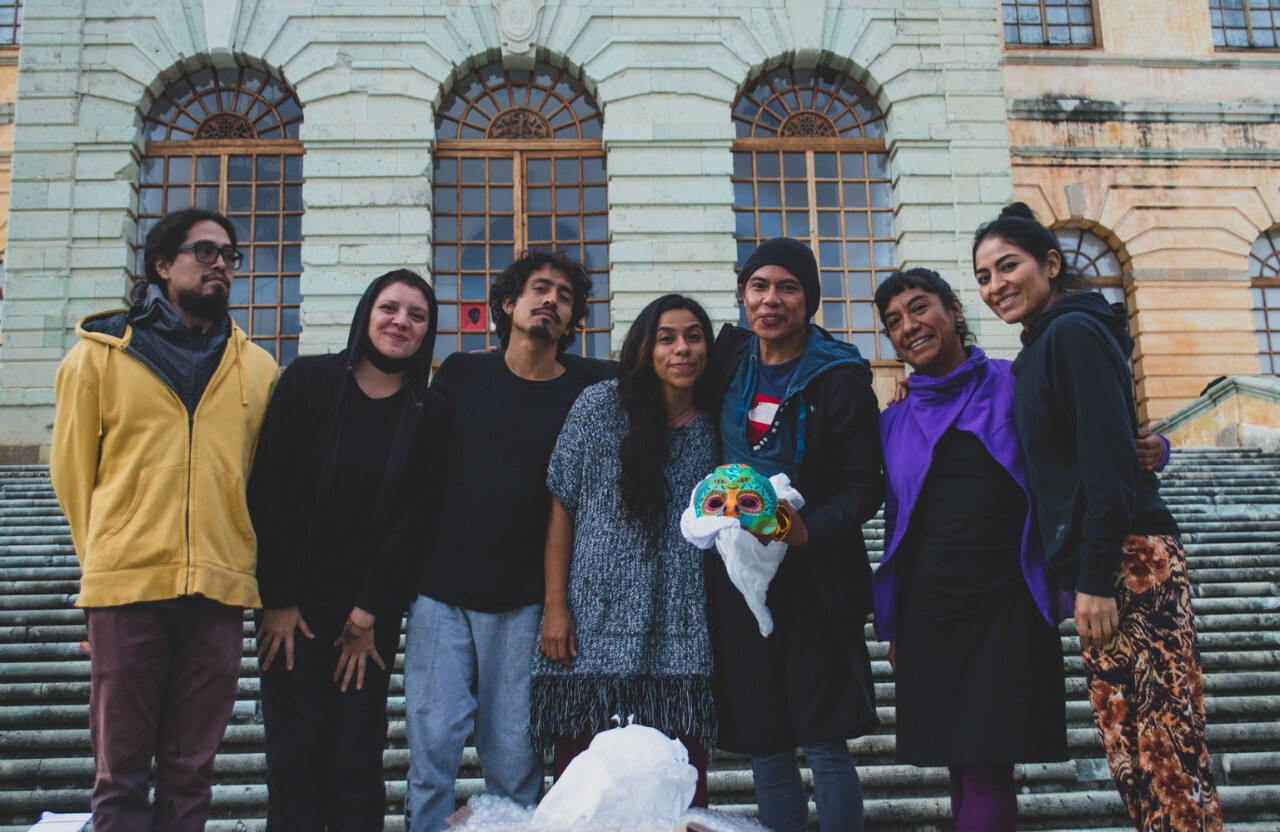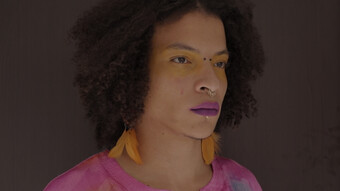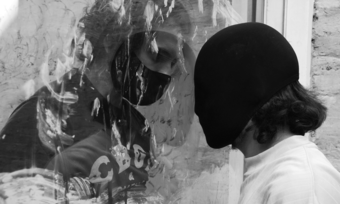Lukas Avendaño is an internationally lauded performance artist, anthropologist, writer, activist, and member of Mexico’s National System of Art Creators. Born in the Isthmus of Tehuantepec, Avendaño identifies, and is identified by his Binni Zaa (Zapotec) community, as muxe: a performance of gender that challenges colonial impositions of the male/female binary and its heteronormative corollaries. In order to respect this muxeidad as a way of being and doing, in the writing of this essay I follow Avendaño’s cue and alternate between “she/her/hers” and “he/him/his” pronouns. But my efforts are mere approximations, for muxeidad can only be understood within the totality of Binni Zaa collectivity, which, as Avendaño has argued, also has its contradictions.
Without delegitimating its utopic possibilities, while also investigating its precolonial origins, Avendaño uncovers said contradictions through his application of the arqueología de la memoria or archeology of memory: an excavation of taken for granted truths to reveal their complexities coupled with the tracing of emotional and sensorial genealogies to create other possibilities of being. As an experiential and embodied methodology, Avendaño deploys arqueología de la memoria to a life lived beyond categories and a performance praxis that tirelessly unmasks the discourses that pass for reality.
Arqueología de la memoria is central to Xibalbay, Avendaño’s recent multidisciplinary performance project. The title references Xibalbá, the underworld where the lords of fear, illness, destitution, violence, and death reign, as told in the Popol Vuh, a sixteenth century K’iche’ Maya text which is predated by an enduring oral tradition and ritual repertoire practiced throughout Mesoamerica. In contrast to the Popol Vuh’s placement of Xibalbá at the bottom of a nine-tiered underworld, Avendaño’s Xibalbay is not a distant or separate dimension. It is here, on the surface, though many refuse to see the quotidian reality of a México where nearly one hundred thousand persons have been forcibly disappeared since 1964, with over half “disappeared” in the last two years.
Avendaño has been inhabiting—and troubling—Xibalbá since May 10, 2018, the day his brother Bruno was also forcibly disappeared. Like the hero twins of the Popol Vuh, who descended into the underworld to recover their father’s bones and face the murderous lords of Xibalbá, Avendaño has tirelessly searched for her brother while confronting the Mexican state and other forces of death. After thirty months, Bruno’s bones were found and without pause, Avendaño continues to employ all means necessary—in the courts, streets, stage, and screen—to bring to justice the intellectual and material authors of his brother’s disappearance and homicide, and to indict the denial and indifference upon which Xibalbá depends.














Comments
The article is just the start of the conversation—we want to know what you think about this subject, too! HowlRound is a space for knowledge-sharing, and we welcome spirited, thoughtful, and on-topic dialogue. Find our full comments policy here
I thank Lukas Avendaño and Griselda Sánchez Miguel for the generous gift of their time, knowledge, and lived experience. Thanks are also due to José Eduardo Valadés Gaitán for his careful transcriptions of recorded interviews. Any errors in this essay are solely my own.